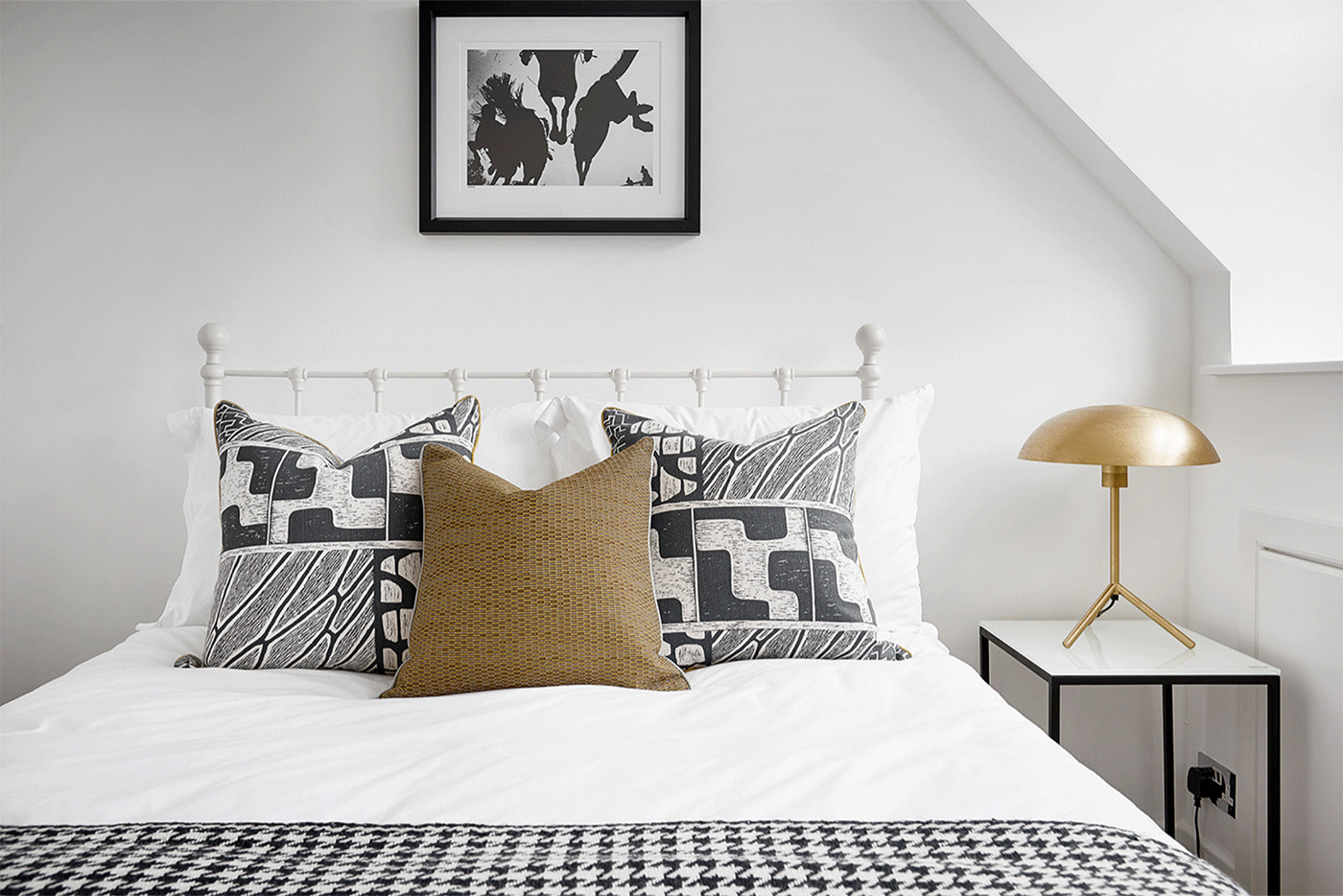For tenants, interior design can be a struggle; from not wanting to spend money on a property you may not stay in for a long time to having to live within the tenancy agreement, renters don't have the same kind of freedoms as homeowners when it comes to decorating and renovating.
Before you make any cosmetic or radical changes to your rental home, it's vital that you check your tenancy agreement and speak with your landlord or letting agent about what you can or can't do.
Some landlords will take an entirely flexible approach, perhaps even more so if you're a long-term tenant, while others will be stricter regarding redecorating.
Here, we lay out three ways you can give your rental property a makeover while not breaching the rules of your tenancy agreement:
De-stress with relaxing spaces
It's now more important than ever that the home is a relaxing, calm, comfortable place to be.
Whatever your situation is, the calming effects of house plants is well known. They're a great stress reliever and are also cheap to purchase and relatively easy to maintain compared to outside plants.
Perhaps more importantly, landlords won't ban them in the tenancy agreement. Plus, you can take them with you if you move homes.
As well as looking nice and bringing colour and vibrancy to a home, they can improve mood, reduce stress levels, increase productivity and improve attention span.
It's important, too, to have a clear and defined workstation and to separate this from your home life. If possible, don't work from your bed in your pyjamas or from the desk in your bedroom. Try to find a more comfortable space elsewhere.
Create a comfortable, relaxing space without too much clutter or distractions, and again try to add greenery and comforting imagery where you can.
Meanwhile, the living room is often the beating heart of the home – the place where people come together to binge on the latest TV series.
This space must be relaxing and comfortable. Even if the rental home is furnished and has come with pre-installed sofas, nothing stops you from decorating these with throws, cushions, and blankets to fit your idea of comfort better.
Equally, there should be no issues bringing rugs or doormats to put your stamp on the home and make it feel more like your own.
Give rooms a fresh lick of paint
Repainting a room can achieve remarkable things in terms of breathing new life into it and making it look all shiny and fresh. Of course, in this situation, you need to be crystal clear on your rights. Some landlords will allow you to redecorate, but others won't.
If it's not made explicit in the rental agreement, you should ask your landlord or letting agent for permission before taking any action. You will likely find many amenable when you put your case across. At the same time, it's unlikely that landlords will be happy for their walls to be bathed in bright pink or lurid green. Even if you are allowed to redecorate, it seems highly likely that landlords will stipulate that things are kept neutral and tasteful.
If you're given permission to decorate – and it should be seen as a privilege, not a right – you must respect the rental property by doing a thorough and professional job. If you don't feel confident about doing this, you may want to call on friends or family – or even a professional tradesperson – to do the job for you.
Landlords may be happy for you to take the initiative in giving certain rooms a fresh lease of life, but you must have their permission first before starting on any work.
Spruce up the garden
With spring just a few months away, if your rental property has a garden now could be the time to give it some love, care and attention so it's ready for a time of year when being outside plenty is once again more inviting.
Generally speaking, as a renter, your tenancy agreement is likely to include a minimum expectation that you keep the garden litter-free, reasonably tidy and not overgrown throughout the tenancy. This could consist of mowing the lawn and keeping on top of weeding, and keeping gutters and drains free of leaves, litter, and other debris.
However, if you want to make more drastic or cosmetic changes to the garden, you will need permission from your landlord to do so. Again, they may appreciate someone taking on the task of transforming the garden space – especially if you're particularly green-fingered – but they are unlikely to want anything too expansive or ostentatious. They will want a garden that will appeal to a broad range of tenants for the long term.
A tidy garden can be a great space to escape to, even in the colder winter months, but especially in spring and summer.
Summary
These are just three ways in which you can makeover your rental property, but it is important to always ensure your landlord is on board with any changes. As a tenant, you should never assume and should always seek permission first. You might be pleasantly surprised that your landlord will say yes more than you might expect.
HomeLet’s tenant's liability insurance is a great way to protect yourself and your deposit from any accidental damage you may cause to your landlord’s property.


 By
By 



Share this with
Email
Facebook
Messenger
Twitter
Pinterest
LinkedIn
Copy this link